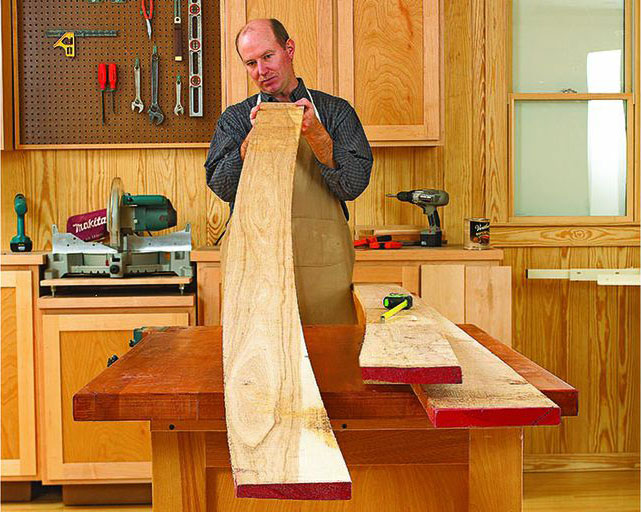Blogs
Wood Warping – Protect Your Projects

2 KEY STEPS YOU CAN TAKE TO MINIMIZE WARPING, SHRINKING, CHECKING OR CUPPING
WHEN THE OUTDOOR TEMPERATURE BEGINS TO DROP AND THE RELATIVE HUMIDITY BEGINS TO FALL, WOODWORKERS MAY FIND THEMSELVES FACED WITH WOOD WARPING, CHECKING, SHRINKING OR CUPPING.
Wood is a hygroscopic material, it tends to absorb moisture from or dissipate moisture to the air. Whether it absorbs or dissipates moisture is dependent upon it’s moisture content in relation to the relative humidity of the surrounding air. No substance we are aware of today will stop the movement of moisture. We can slow it down tremendously, but are not able to stop it.
Problems with wood and moisture occur with imbalances. When relative humidity changes in the surrounding air, wood moves to equalize with it. If the moisture from the air is allowed to enter one face of a board readily and impeded on an opposing face, cupping typically occurs until enough time passes for the two faces to come into moisture content equilibrium.
When wood products are shipped across long geographic distances, the relative humidity present at the end location can vary substantially from the location of manufacture. Packaging can help alleviate problems during shipping, but proper handling after receipt by the end user is also required. Typically an equalization period should be allowed before installation of wood components. This allows the wood time to acclimate to its new location and the corresponding relative humidity.
Another rule experienced woodworkers learn is solid wood shrinks and expands in three dimensions. Tangential to the growth rings, Radially to the growth rings, and Longitudinally. Tangential shrinkage from green lumber state to oven dry state is the greatest and for hardwoods varies from 6.3% to 11.9%. Radial shrinkage varies from 3% to 7.7% and Longitudinal varies from 0.1% to 0.2%. As you can see, longitudinal shrinkage is very slight in comparison to the other two. The next consideration is what is the moisture content of green hardwood lumber? According to the U.S. Department of Agriculture’s Wood Handbook, the moisture content of green hardwoods vary from 150% down to 44% dependent upon specie and whether you are measuring heartwood or sapwood. For most applications in the United States 6% to 8% moisture content is where lumber should be to start fabrication in the winter months. 8% to 12% moisture content is fine for most applications in the summer months. Musical instruments are a different animal and require dryer conditions than most applications and 3% to 4% is typically required. In any case, knowing what your relative humidity is and knowing your design takes into account wood’s hygroscopic nature are both requirements of successful woodworkers.



